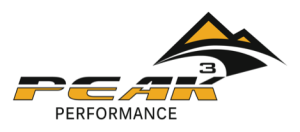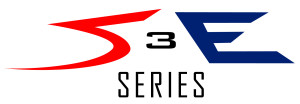Bobby Reisz, MSE, ATC, CSCS, LMT
Owner
515-577-7901
peakperformancesportstraining.com
PEAK BODY FLUSH
P: Power/Posture- Integrating strong postural movements performed while maintaining proper body awareness and positioning
E: Explosive- Exerting energy quickly in your sport
A: Acceleration- Change of speed, build ups
K: Kore- Controlling trunk position and motion in order to transfer and control force and motion of action
FLUSH
- Reduction in edemas (swelling) and lymphedemas of various origins
- Detoxification of the body
- Regeneration of tissue
- Relief of numerous chronic and subacute inflammations
- Relief of chronic pain
- Reduction in the symptoms of chronic fatigue syndrome
- Deep relaxation to aid insomnia and stress
- Deep Tissue Massage
- AIS Technique
- Deep, Superficial Fascial Release
- Performing an Active Isolated Stretch of no longer than two seconds
- This allows the target muscles to optimally lengthen without triggering the protective stretch reflex and reciprocal antagonistic muscle contraction as the isolated muscle achieves a state of relaxation.
- These stretches provide maximum benefit and can be accomplished without opposing tension or resulting trauma.
- The Active Isolated Stretching (AIS) method of muscle lengthening and fascial release is a type of Stretching Technique that provides effective, dynamic, facilitated stretching of major muscle groups.
- AIS provides functional and physiological restoration of superficial and deep fascial planes.
- Prolonged static stretching technique was the gold standard.
- Prolonged static stretching actually decreases the blood flow within the tissue creating localized ischemia and lactic acid buildup.
- This can potentially cause irritation or injury of local muscular, tendinous, lymphatic, as well as neural tissues, similar to the effects and consequences of trauma and overuse syndromes.
- Myofascial Release
- Achieve Optimal Flexibility
- Aaron Mattes’ myofascial release technique, incorporates Active Isolated Stretching, using active movement and reciprocal inhibition to achieve optimal flexibility.
- Using a 2.0 second stretch has proven to be the key in avoiding reflexive contraction of the antagonistic muscle.
- Without activating muscle group contraction, restoration of full range of motion and flexibility can be successfully achieved.
- Neuromuscular therapy (NMT)
- Approach to soft tissue manual therapy in which quasi-static pressure is applied to soft tissue
- Stimulate skeletal striated muscle.[clarification needed][citation needed] Often these areas of muscle are myofascial trigger points.
- NMT practitioners claim to balance the central nervous system with the structure and form of the musculoskeletal system.
- Through applied knowledge of trigger points, neuromuscular therapy addresses postural distortion (poor posture), biomechanical dysfunction, and nerve compression syndrome.
- In NMT, one must apply manual perpendicular to the skin surface if muscle is to be stimulated.
Sometimes a “truth” is not what it seems. For years, many massage therapists have been taught that lactic acid can and should be flushed from the muscles of athletes after intense activity. Both therapist and client thus have established and perpetuated a mutual belief system that purging of lactic acid is not only necessary, but also efficiently accomplished with the assistance of massage.
Lactate accumulated from intense exercise actually fuels the body, according to Dr. Owen Anderson, exercise physiologist and editor of Running Research News. In a recent interview from his office in Michigan, Anderson explained the facts:
Lactic acid levels will return to homeostasis quickly post-exercise without any “hands-on” assistance. Massage will probably have the biggest effect on venous blood,” and by the time massage is administered, lactate has already left the muscle. Lactic acid does not cause muscle soreness, fatigue or the “burn” of intensive exercise, noted Anderson. Brooks noted that lactic acid is a key substance for providing energy, disposing dietary carbohydrate, producing blood glucose and liver glycogen and promoting survival in stress situations.1
Nature’s Magic Tricks
It maintains the chemical process of glycolysis to provide energy on a 24-hour basis. In Anderson’s book, Lactate Lift-off, he writes, “Glycolysis is actually a series of 10 different chemical reactions…that break down glucose, the simple six-carbon sugar which is your body’s most important source of carbohydrate fuel, into something called pyruvic acid.”2 From pyruvic acid, with the help of the enzyme lactate dehydrogenase, we get lactic acid.
- The process of glycolysis converts each glucose molecule into two pyruvic acid molecules, releasing energy in the form of adenosine triphosphate (ATP).
- Pyruvic acid enters the mitochondria, where more ATP is produced through the Krebs cycle.3
- “In addition to ‘handling’ the pyruvic acid produced from glucose,” states Anderson, “the Krebs cycle also metabolizes fats; over all, it furnishes more than 90 percent of the energy you need to exercise in a sustained manner.”4
Lactic acid production is a normal and continuous part of the body’s energy cycle. According to Anderson, lactate is produced even at rest and “…its concentrations can rise rather dramatically whenever you take in a carbohydrate-containing meal.” Lactate plays an important role in processing carbohydrate and facilitating its availability to the liver and muscles.8
“When you begin a moderate to difficult workout,” states Anderson, “lactate levels in your blood initially rise, simply because glycolysis is working away to provide quite a bit of the energy you require.” This limits the breakdown of pyruvate in the Krebs cycle and increases its conversion to lactate. This can be a result of oxygen debt inside the muscle cell, inadequate concentrations of enzymes necessary for oxidation at high rates or a lack of sufficient cell-mitochondria, where the Krebs cycle takes place. The point at which this occurs is referred to as the lactate threshold (LT). According to Anderson, the LT is simply an indicator of how effectively your tissues utilize lactate as an energy source. For athletes, a high LT means increased endurance – the longer the athlete can perform before reaching this point, the longer lactate production and extraction is kept in balance and energy is maintained.10
A study by Monedero and Donne showed while active recovery proved best in removing lactic acid, a combined approach (active recovery and massage) did increase recovery rate during short intervals between maximal efforts and was most efficient for maintaining maximal performance time. For post-exercise recovery, Anderson recommends a cool-down of about 10 minutes or followed by stretching and strengthening exercises, nutrition (carbohydrates) to restock energy and a good night’s sleep. This can be accomplished with proper training, such as methods recommended in Lactate Lift-off.16 An effective training approach can increase the supply of mitochondria, enzymes and capillaries needed to enhance the body’s ability to rapidly use lactate as an energy source.17
Soreness, Fatigue and the ‘Burn’
Is lactic acid to blame? Anderson indicates there are two likely causes of muscle soreness: tears in the muscle associated with the stress of exercise and free radical attack on the muscle membranes. According to physician Dr. Gabe Mirkin, “Next-day muscle soreness is caused by damage to the muscle fibers themselves. Muscle biopsies taken on the day after exercising show bleeding and disruption of the z-band filaments that hold the fibers together as they slide over each other during a contraction.” Mirkin suggests ceasing exercise when muscles start to burn and hurt as this is likely an indication that DOMS will occur.18
“So What About Massage?
There are benefits to the “flush” to validate its use in sports. “I’ve seen that massage is effective.
Pointing to a study by Tiitus and Shoemaker (1995) “This is a mechanistic way of looking at what’s going on.”
“Clinically, we see a different story,” he said. “Through our techniques we work with the nervous system to relax muscles.” I believe the effects of massage also involve the neurological and emotional. The emotional controls the chemical messengers that affect the immune system. Massage stimulates the mechanoreceptors and can gate off pain receptors. It floods the body with new sensory input. We are using the nervous system to reset the muscle to greater relaxation.
“In my observation, fatigued muscles tend to remain hypertonic and shortened so elongation and extension is the key. When we help specific muscles to relax and lengthen via mechanical and neurological input, we reduce their metabolic activity. When the muscle relaxes, it’s not using energy as much, not metabolizing as fast, not producing waste products and because it’s more relaxed. This means circulation is better. By massaging muscles and adding input to the nervous system, we are facilitating the body in recovering faster from exercise.
In a British study of boxers, massage was reported to have a significantly positive effect on perception of recovery, giving scientific credence of its benefits as a recovery strategy. Grant takes that a step farther. From my own experience in athletics, when you exert to the point of substantial fatigue, you come back feeling more fragile, in an emotionally vulnerable spot. To have the sense that someone is nurturing, in a sense taking care of you, is a very psychologically emotional thing. It has to do with psychoneuroimmunology, the whole chemical homeostasis of their body — neurochemicals and the relationship between mood, or feelings, and the immune system.
When you provide support it has a positive effect on immune function. If the person doesn’t feel supported and nurtured, it will have a negative effect on the chemical environment, opening them more to catching colds, not healing as fast and decreasing their ability to train. It ties into the whole emotional state of a person. With massage, they can train harder because they are able to recover faster.”
References
1. Vannatta, Dan. “Lactic Acid: Friend or Foe?” http://sportsmedicine.about.com/library/weekly/aa053101a.htm.
2. Anderson, Owen, Lactate Lift-off (Lansing, Mich.: SSS Publishing, 1998),16.
3. Vannatta.
4. Anderson, 16.
5. Vannatta.
6. Anderson, 16-24.
7. Grant, Keith. “Lactating Mythers.” www.mckinnonmassage.com/articles/lactating_mythers.html.
8. Anderson, 20-21.
9. Ibid., 25-26.
10. Ibid., 26-30.
11. Grant.
12. Ibid.
13. Vannatta.
14. Hemmings, B., Smith, M., Graydon, G. and Dyson, R., “Effects of massage on physiological restoration, perceived recovery, and repeated sports performance,” British Journal of Sports Medicine 34 (2000): 113.
15. Monedero, J. and Donne, B., “Effect of recovery interventions on lactate removal and subsequent performance,” International J. of Sports Medicine 21, 8 (Nov. 2000): 593-597.
16. Anderson, 30-35.
17. Grant.
18. Mirkin, Gabe. “What causes muscle soreness?” Report #6386. www.drmirkin.com/archive/6386.html.
19. Grant.
20. Hemmings, 113.


 Bobby Reisz and the Peak Performance Team are dedicated to powering your athletic, fitness and weight loss goals!
Bobby Reisz and the Peak Performance Team are dedicated to powering your athletic, fitness and weight loss goals!
Online Scheduling Available Now!